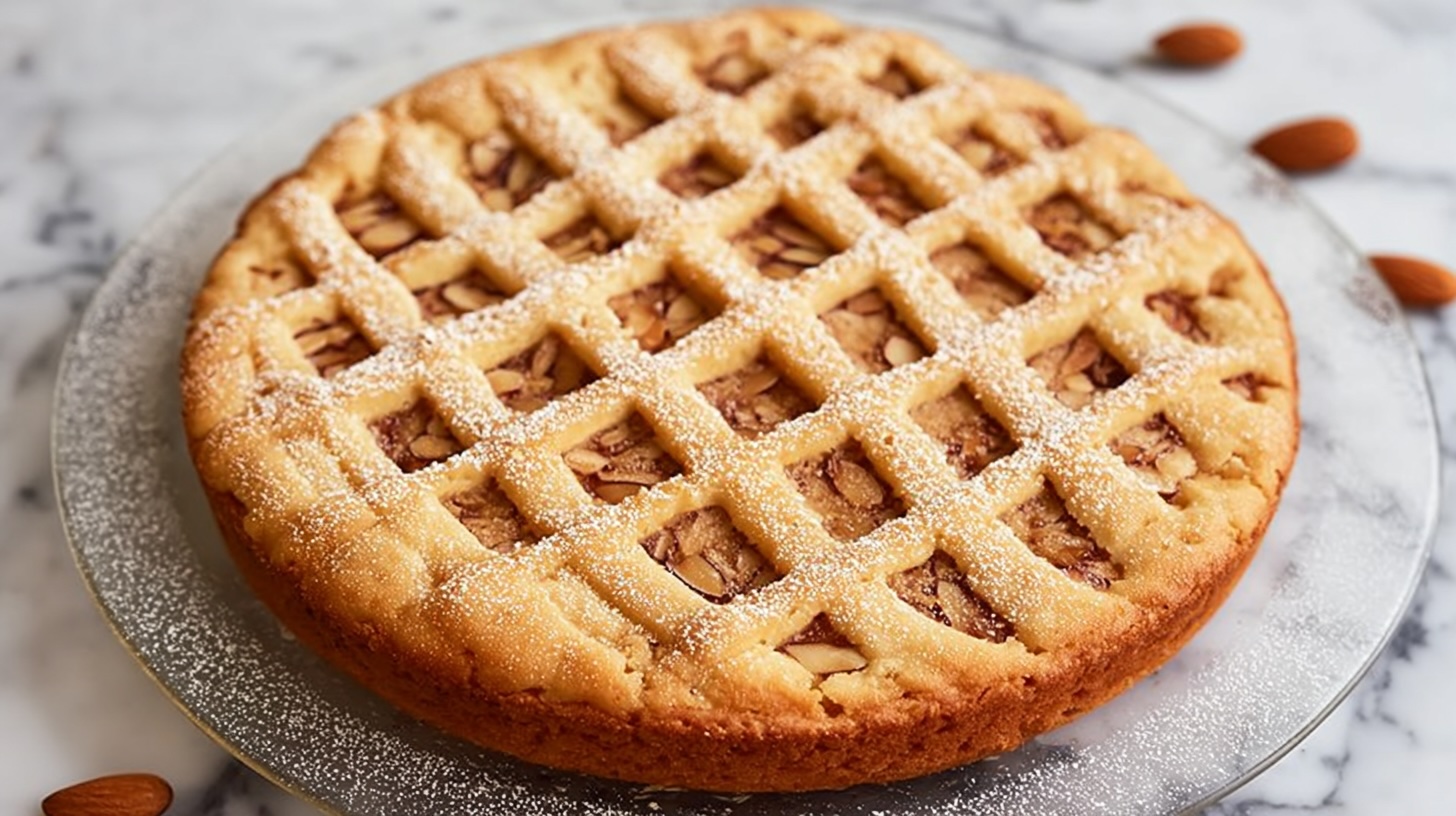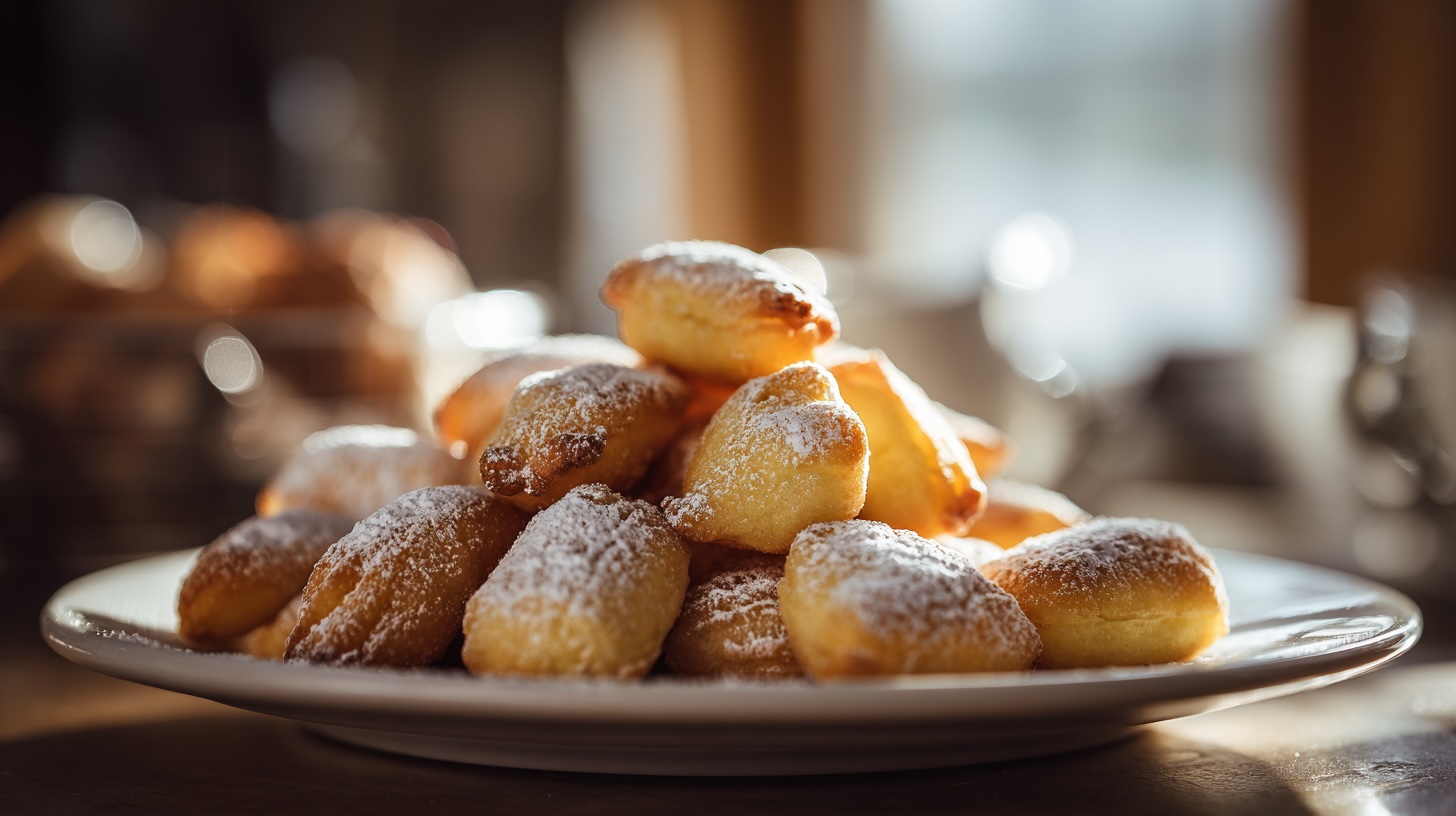The Sweetest Crunch in Malta: The Story of Imqaret
If Malta had a national scent, it would probably be a mix of seawater, diesel from fishing boats, and that unmistakable aroma wafting from street vendors frying imqaret — those sticky, crispy, date-filled pastries that make even the most disciplined eater stop mid-stride. The word itself, plural for maqrut (meaning diamond-shaped), sounds like something you might mutter approvingly after your first bite: a soft, sighing mmm-qaret.
The story of imqaret starts with the Arabs, as so many Mediterranean culinary tales do. During their long presence on the island (870–1249), they brought not just irrigation systems and the Arabic language roots that still echo in Maltese, but also a fondness for dates. Somewhere between North Africa and Malta, someone decided that dates would taste even better when chopped, spiced, and wrapped in thin pastry. And fried, of course. Always fried. Because baking, lovely as it is, rarely achieves that audacious crunch followed by melting sweetness.
Through the centuries, imqaret became inseparable from Maltese street life. They appeared at festas, at Sunday markets, and in the hands of old men playing bocci in Valletta squares. No celebration or fair felt complete without that smell—golden dough sizzling in hot oil, the filling caramelising slightly at the edges. If there is a Maltese equivalent of Britain’s chip shop nostalgia, imqaret fits the bill, only stickier and more perfumed.
Though at heart the recipe is simple—pastry, dates, and spices—it has spawned endless regional and familial variations. Some people add orange zest, others a splash of anisette or bay leaf. A few islands’ grandmothers insist that the secret lies in letting the date mixture rest overnight, so the flavours marry. Others swear it must be fried in olive oil, never vegetable. In Gozo, you might find imqaret slightly thicker, with a filling that leans towards chewy fudge. In Valletta’s street stalls, they’re thinner, crispier, made for eating with one hand while balancing a coffee in the other. There are even modern spins—baked versions for the health-conscious, or ones with chocolate-dipped edges that cause eye-rolling among purists.
So what makes imqaret so special? Perhaps it’s the unapologetic simplicity. This is not a dessert pretending to be anything else. It doesn’t need a garnish, plating, or explanation. It comes hot in a brown paper bag, slightly greasy, the filling threatening to escape. It’s that perfect balance between humble street snack and cultural symbol. Like cannoli in Sicily or churros in Spain, imqaret bridges class, occasion, and time. Everyone eats them—locals, tourists, school kids, priests sneaking one after Mass. It’s the kind of food that makes no social distinction, which in today’s world feels almost radical.
Pairing imqaret with drinks opens a whole new layer of Maltese pleasure. Espresso is the classic companion—the bitterness slicing through the sugary date paste. But if you want to feel truly local, try it with a glass of kinnie, Malta’s bittersweet orange and herbal soda, which somehow manages to amplify the spice notes. For those with more decadent tendencies, a small glass of sweet Marsala or a muscat dessert wine brings it into Mediterranean after-dinner territory. And if it’s too early in the day for that (is it ever?), a strong black tea works wonders, particularly when you dunk the pastry just long enough for it to soften slightly.
If you’re putting together a table of Maltese delights, imqaret fit beautifully with other island specialities. They follow a pastizz with comic precision: the savoury ricotta or pea-filled pastry leading gracefully to the sweet, date-filled finale. They also go well after lampuki pie, that seasonal fish pie that defines Maltese autumns. And if you’re brave, try imqaret with a scoop of vanilla ice cream—the contrast of hot pastry and cold cream is enough to make you reconsider everything you thought you knew about dessert hierarchy.
On the matter of health—let’s not pretend. Imqaret are fried and sweet. They are not going to be approved by your nutritionist. But they do carry some redeeming qualities, especially if you’re looking for excuses. Dates are rich in fibre, potassium, and antioxidants. They provide a natural energy boost, which surely balances out the oil, at least philosophically. The spices often used—aniseed, cloves, cinnamon—also have a long list of alleged benefits, from aiding digestion to improving circulation. Maltese grandmothers will tell you that a few imqaret on a windy winter afternoon are basically medicine. Who are we to argue?
Finding good imqaret is not difficult in Malta, but finding the perfect one is a sport. The best are usually those fried to order at open-air markets or festa stalls. Valletta’s City Gate and Marsaxlokk’s Sunday market are legendary for theirs. Some bakeries in Mdina and Rabat make elegant versions, baked for tourists, with a delicate glaze. But the soul of imqaret lives in the informal—in the slightly overcooked edges, the uneven shapes, the warm paper bag that leaves a faint mark on your hand. Outside Malta, you might find them in Maltese diaspora bakeries in London or Toronto, often tucked beside trays of qaghaq tal-ghasel and almond biscuits. They rarely taste quite the same—perhaps because no one can reproduce that mix of Mediterranean humidity and anticipation that comes with eating one on a Maltese street.
Imqaret Recipe
The making of imqaret is straightforward but demands patience, particularly when it comes to the filling. Start by chopping dates—the softer, the better. Deglet Noor or Medjool are perfect. Place them in a saucepan with a bit of water, a drizzle of orange juice, and let them soften over low heat. Add the holy trinity of Maltese sweetness: cinnamon, clove, and aniseed, perhaps with a hint of grated orange zest or a dash of brandy if you’re feeling festive. Once the mixture thickens to a spreadable paste, let it cool. This is not optional—hot filling will ruin your pastry.
Meanwhile, make the dough. Traditionalists will tell you to use plain flour, a touch of semolina for crispness, sugar, and a bit of butter or lard. Some even add a splash of arak (aniseed liqueur) to the dough itself, which adds subtle fragrance. Knead it until smooth, let it rest for half an hour, and then roll it out thinly. Spread the cooled date mixture in a long line across the dough, fold it over, seal the edges carefully, and cut into diamond shapes. At this point, you can either fry them immediately or refrigerate for a short while to firm up the pastry.
Frying is the moment of truth. The oil must be hot—around 180°C—so that the pastry crisps instantly without absorbing too much oil. Drop them in gently, fry until golden brown, turning occasionally. When done, rest them briefly on kitchen paper, then serve immediately. They’re best eaten warm, when the filling is still slightly molten and the pastry audibly crackles as you bite.
Some drizzle honey or dust icing sugar on top, but many Maltese prefer them plain—their flavour speaks loudly enough. If you’re serving them at home, pile them casually on a ceramic plate, maybe with a sprig of mint or orange peel for show. Just make sure there are enough to go around; imqaret disappear faster than you can explain their name.
There’s something deeply human about these little pastries—the way they embody a mix of cultures, simplicity, indulgence, and memory. You taste North Africa, Sicily, the Middle East, and the Mediterranean sun all at once. It’s as if Malta’s entire history—its conquests, its languages, its stubborn independence—has been fried into a golden triangle. They are comfort food, heritage snack, and tourist temptation rolled into one sweet bite. And they remind us that sometimes the best way to understand a country is not through its monuments or museums, but through the warm paper bag in your hand, and the smile that comes right after the first crunch.



